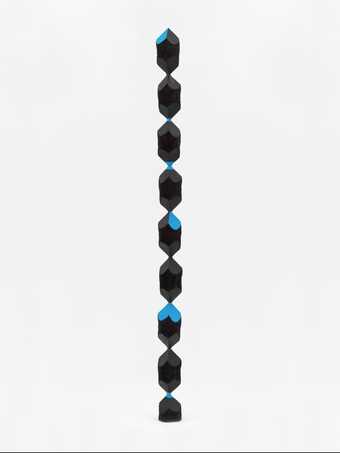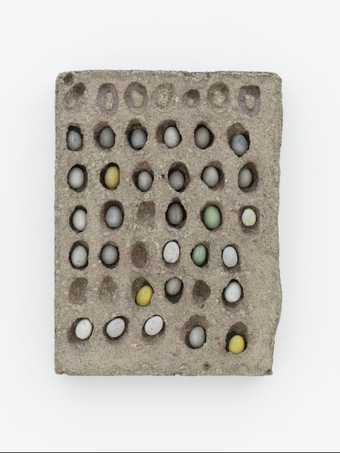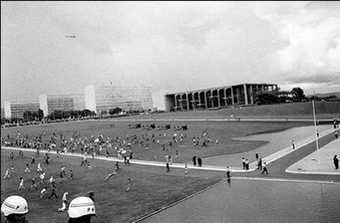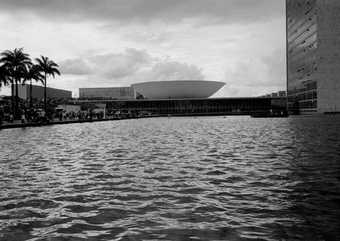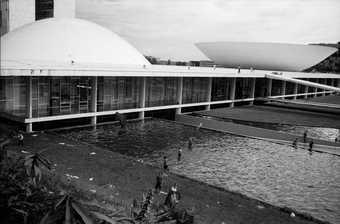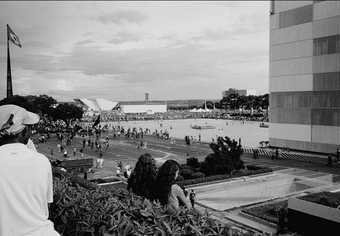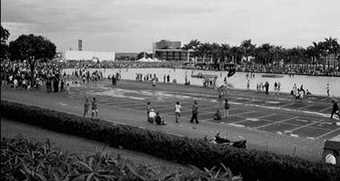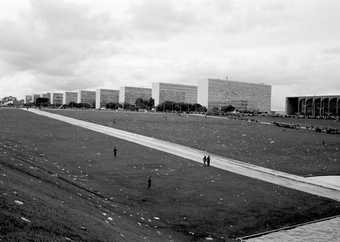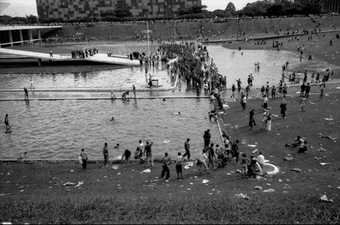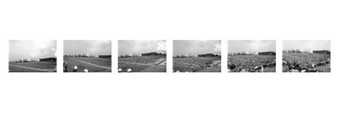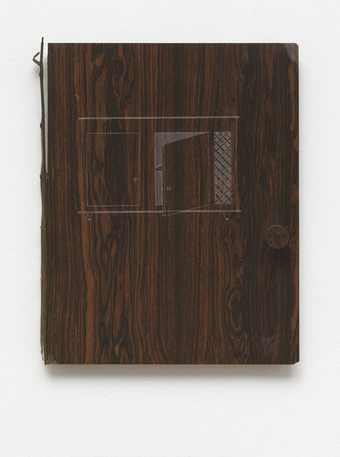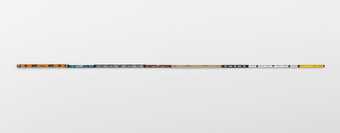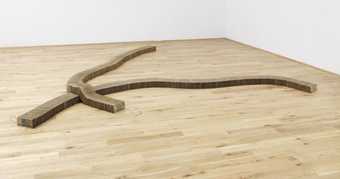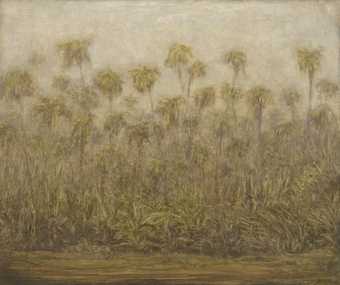In Tate Liverpool
Ideas Depot
Free- Artist
- Erika Verzutti born 1971
- Original title
- Tarsila com Laranja
- Medium
- Bronze and acrylic paint
- Dimensions
- Object: 270 × 340 × 270 mm
- Collection
- Lent by the Tate Americas Foundation, courtesy of the Latin American Acquisitions Committee 2019
On long term loan - Reference
- L04292
Summary
Tarsila with Orange 2011 is a painted bronze sculpture by the Brazilian artist Erika Verzutti. While Verzutti often works with the tradition of bronze casting, her emphasis is consistently placed on tactility and the handmade, and this sculpture is a key work in this regard, both in its form and conceptualisation. Verzutti produced the composition in clay, vertically pulling up a narrow, arching form that she then cast, such that it appears to both cradle and overlook an orange sphere. The ‘orange’ relates to her practice – begun around 2007 and continued for approximately seven years – of casting fruits and vegetables and using the shapes as recurring elements of her ambiguous sculptures (see also Brasília Tile 2011, Tate T15433, and Pencil 2014, Tate L04290). The odd, snake-like form of Tarsila with Orange has been a recurring motif in the artist’s work since 2003, and she has adapted it and described it in relation to the forms of a swan, a dinosaur, a phallus or a vegetable. Most often, and in this case of this work and its title, she draws direct reference between this shape and the work of Brazilian modernist painter Tarsila do Amaral (1886–1973), whose painting Setting Sun 1929 (private collection) features a similarly ambiguous animal at its centre.
Besides these art historical connections, the motif holds deep personal significance for the artist who associates its shape closely with her cat (who used to nuzzle against these sculptures). Around 2008 her long-held fear of the eventual death of her pet led her to study and invent sculptures inspired by pet cemeteries. Since that time, she also began creating floor installations which she called ‘cemeteries’, grouping together various broken sculpture and pieces from what she deems unsuccessful artworks.
Verzutti has spoken of her creative process as a kind of circle: her starting point can be the materiality of her chosen medium (the clay from which she modelled the form of this work), an aspect of her personal life (her cat), an art historical reference (Tarsila do Amaral’s painting) or an interest in a certain pop culture phenomenon; through the process of making a sculpture like Tarsila with Orange she then connects each of these areas (conversation with Tate curator Michael Wellen, 24 September 2018). This work is typical of the way in which she uses clay and bronze to loosely imitate common objects and animals, triggering humorous and unlikely associations between form, materiality and personal narrative.
Tarsila with Orange exists in an edition of three with on artist’s proof; Tate’s copy is the artist’s proof.
Further reading
José Augusto Riberio, Erika Verzutti, Rio de Janeiro 2013.
Ian Berry (ed.), Erika Verzutti: Mineral, exhibition catalogue, The Frances Young Tang Teaching Museum and Art Gallery at Skidmore College, Saratoga Springs, New York State 2015.
Michele D’Aurizio, ‘Echoes of Touch: Erika Verzutti talks about sharing the experience of making’, Flash Art, no.323, January–February 2015, https://www.flashartonline.com/article/echoes-of-touch/, accessed 6 November 2018.
Michael Wellen and Inti Guerrero
November 2018
Does this text contain inaccurate information or language that you feel we should improve or change? We would like to hear from you.
You might like
-
Erika Verzutti Pencil
2014 -
Erika Verzutti Brazil
2018 -
Mauro Restiffe Empossamento #1c
2003 -
Mauro Restiffe Empossamento #3
2003 -
Mauro Restiffe Empossamento #4
2003 -
Mauro Restiffe Empossamento #5
2003 -
Mauro Restiffe Empossamento #6
2003 -
Mauro Restiffe Empossamento #7
2003 -
Mauro Restiffe Empossamento #8
2003 -
Mauro Restiffe Empossamento #10
2003 -
Mauro Restiffe Empossamento #1
2003 -
André Komatsu Untitled (Living Room)
2005 -
Jac Leirner 8 levels
2012 -
Jac Leirner Blue Phase
1991 -
Lucas Arruda Untitled
2020


